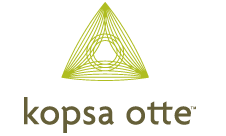IRS has announced that employees won't be taxed when they forgo vacation, sick, or personal leave in exchange for employer contributions of amounts to charitable organizations providing relief to Hurricane Sandy victims. Employers may deduct the amounts as business expenses.
Treatment of leave based-programs.
Some employers have set up programs where employees can donate their vacation, sick or personal leave in exchange for the employer making cash payments to qualified tax-exempt organizations that provide relief for the victims of Hurricane Sandy. The IRS has announced that it will not assert that cash payments an employer makes to organizations in exchange for vacation, sick, or personal leave that its employees elect to forgo constitute gross income or wages of the employees if the payments are:
(1) made to the qualified organizations for the relief of victims of Hurricane Sandy; and
(2) paid to qualified organizations before Jan. 1, 2014.
Nor will giving employees the choice to participate cause employees to be considered in constructive receipt of income. However, employees who participate in a leave-sharing donation program won't be allowed to claim a charitable contribution deduction for the value of forgone leave excluded from compensation and wages.
As for employers, IRS won't assert that payments made under a leave-sharing donation program are deductible as charitable contributions.
Thus, the employer will be able to deduct the payments without being subject to the various charitable contribution limits to C corporations.
Treatment of Form W-2. Amounts representing leave-sharing donations need not be included in Box 1 (wages, tips, or other compensation), Box 3 (Social Security wages, if applicable), or Box 5 (Medicare wages and tips) of Form W-2.
In other words, these amounts also will be free of income- and payroll-tax withholding.
Participation in these programs can help both employees who itemize and those who don't. For example, a non-itemizer who forgoes $2,000 worth of leave will get the equivalent of a $2,000 deduction that would not be available if he took the leave and contributed $2,000 in cash himself.
The lower adjusted gross income (AGI) from participating in the program may make it possible for the employee to achieve a greater tax benefit from any of the numerous deductions and credits that are reduced as AGI increases. For example, participation may yield a higher deduction for a contribution to a traditional IRA. Itemizers can also benefit from the lower AGI. Both itemizers and non-itemizers can save Social Security taxes on the amount foregone. On the downside, participation could result in smaller retirement plan contributions depending on how compensation is defined under the employer's retirement plan.


